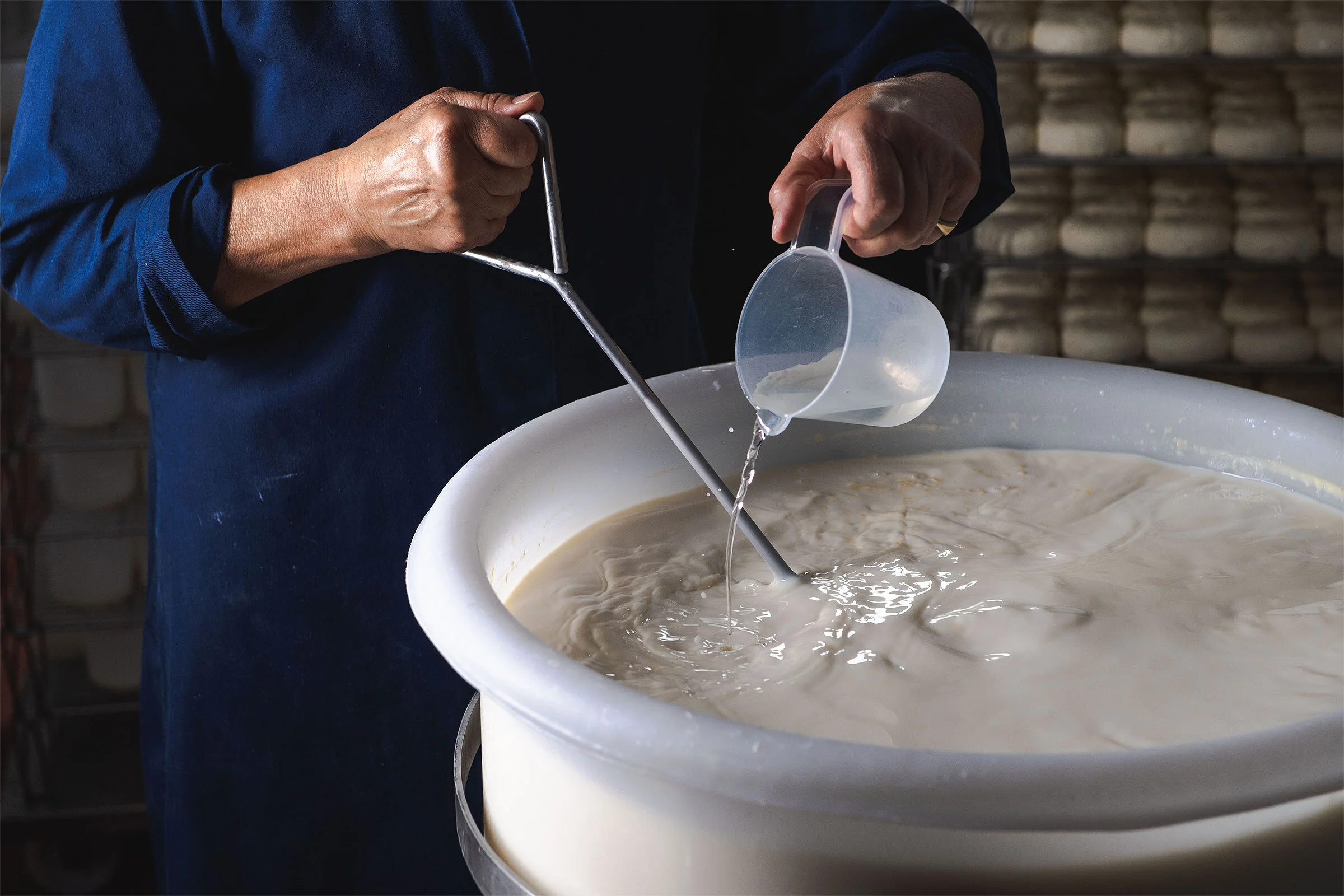
Photo 1
Rennet is a natural coagulant which is gently stirred into the milk to set the curd.

Photo 2
Feeling the set of the curd. Once coagulated the curd continues to acidify, gradually bringing flavours.

Photo 3
The curds are cut into cubes to aid the drainage of the whey and are carefully ladled into the cheese moulds.

Photo 4
In under two hours of ladling the formed cheeses are turned within their individual moulds.

Photo 5
The formation of the rind mould, geotrichum candidum, helps to break down the cheese proteins, expressing flavours of the Montbéliarde milk.

Photo 6
The cheeses are all salted with dry salt, turning by hand to salt both sides before they are put in the maturation rooms.

Photo 7
When the cheeses are one week old some are selected to be St.Cera and are placed in wooden boxes ready to wash the rind.

Photo 8
St.Cera is washed in a weak brine solution to change the ripening environment, encouraging stronger flavours and colours.














